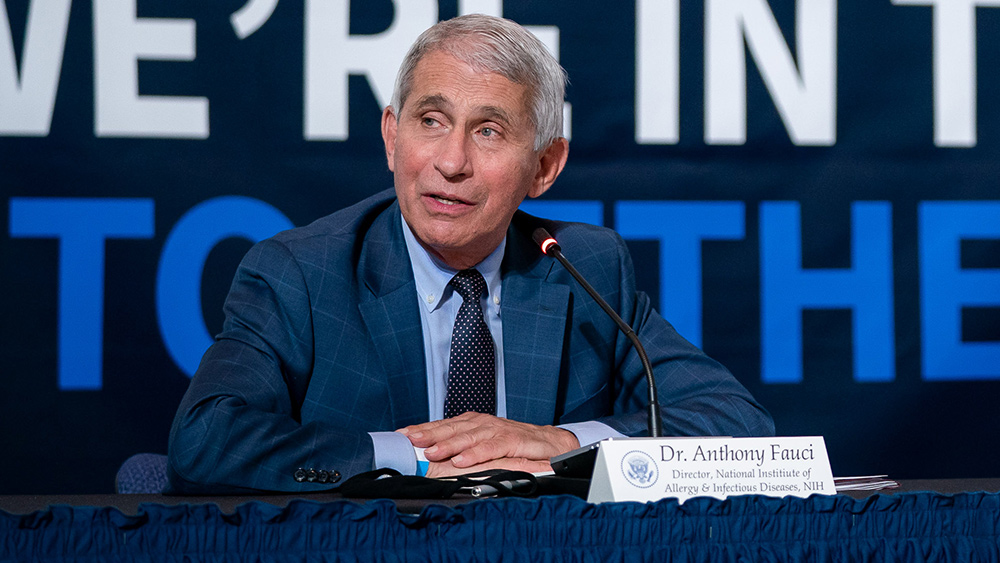Study: 2 in 3 Indians have natural immunity against coronavirus, meaning “herd immunity” is already achieved
07/22/2021 / By Nolan Barton

The latest sero survey conducted by the Indian Council of Medical Research (ICMR) found that at least two in every three people in India have coronavirus (COVID-19) antibodies, or natural immunity, against the disease.
Published Tuesday, July 20, the survey called seroprevalence study included 36,227 people from 70 districts across 21 Indian states. It found that 62 percent of unvaccinated Indians have antibodies, indicating past exposure to the virus. Overall, 67.6 percent of Indians have antibodies – either acquired from the vaccination campaign or past infection.
Fourth sero survey is a charm
The survey was carried out in the last 10 days of June and the first week of July – just as a devastating second wave of COVID-19 infections was receding. Seroprevalence is the percentage of individuals in a population who have antibodies to an infectious agent.
“The fourth sero survey shows there is a ray of hope, but there is no room for complacency. We must maintain COVID-appropriate behavior,” ICMR chief Dr. Balram Bhargava said. The third sero survey showed that only 21 percent of India’s adults had COVID antibodies.
For the first time, the survey included children between six and 17 years old and more than half of the 8,691 samples that were tested had antibodies. The survey also included 7,252 healthcare workers, and 85 percent of them had antibodies.
It has raised hopes that the worst of the country’s pandemic crisis is over despite a sluggish vaccination campaign. India has fully vaccinated just 6.5 percent of its population, while about a quarter of the population has received at least one dose.
Seroprevalence levels were highest at about 77 percent in people over the age of 45, the group that received first priority access to vaccines. Seroprevalence among children aged six to nine was 57 percent, while 61 percent of those aged 10 to 18 had antibodies. People under 18 are not yet eligible for vaccination in India.
The country has reported more than 31 million COVID cases and 414,000 deaths so far, but its daily new case counts have been steadily falling. Recent available data showed that new cases are below 40,000 a day. At the peak of devastating second wave in May, India was reporting around 380,000 new cases on average daily.
According to experts, the survey affirmed how far the virus had spread in India during the second wave of infections earlier this year. They cautioned that another surge in infections could not be ruled out as a third of India’s 1.4 billion people still lacked antibodies.
“Given the transmissibility of the Delta variant, we are still susceptible to a third wave,” said Brian Wahl, a New Delhi-based epidemiologist at Johns Hopkins Bloomberg School of Public Health.
“Even that high level of seroprevalence is still probably below what a herd immunity threshold might look like for the Delta variant.” Related: COVID-1984: WHO changes official definition of “herd” immunity to remove natural immunity.)
Chandrakant Lahariya, a public health expert, said that any third wave was likely to be smaller than the onslaught of cases that overwhelmed India’s health system in April and May. “Localized smaller waves are possible in [geographical] pockets where seroprevalence is low in the months to follow,” he said.
Study: India suffered up to 4.7 million excess COVID deaths
A second study, also published on Tuesday, estimated that India had suffered between 3.4 million and 4.7 million excess deaths during the pandemic – about 10 times the official death toll. The Indian government only counts patients who die in hospital with a positive test as COVID-19 deaths.
The study, whose three authors included Arvind Subramanian, the government’s former chief economic adviser, examined three sources of data: all-cause mortality statistics from seven large states; seroprevalence studies; and household surveys carried out by the Center for Monitoring Indian Economy.
While each of the three sources yielded different estimates, the paper’s authors said “they all point to significantly greater deaths than the official estimates” and indicated that India’s “first wave was more lethal than is widely believed.”
“What is tragically clear is that too many people, in the millions rather than the hundreds of thousands, may have died,” the authors said. (Related: CDC caught massively inflating coronavirus cases, deaths in violation of federal law.)
There were 10.073 million all-cause deaths in India last year, only 1.49 percent or roughly 147,000 more than the previous year’s 9.926 million.
Follow Pandemic.news for more news and information related to the coronavirus pandemic.
Sources include:
Tagged Under: coronavirus, covid-19, COVID-19 deaths, Delta Variant, discoveries, herd immunity, immune system, India, infections, natural immunity, outbreak, pandemic, research
RECENT NEWS & ARTICLES
COPYRIGHT © 2017 SUPER BUGS NEWS





















